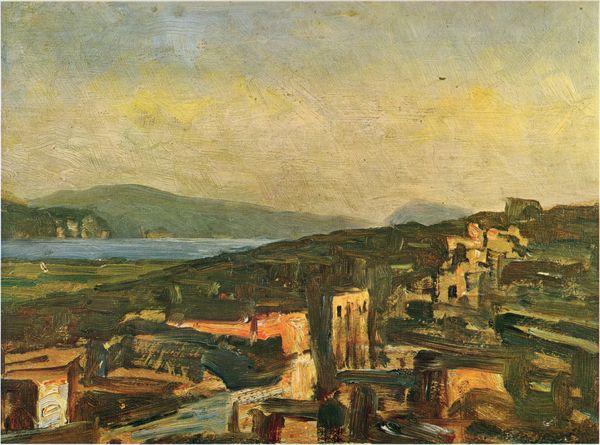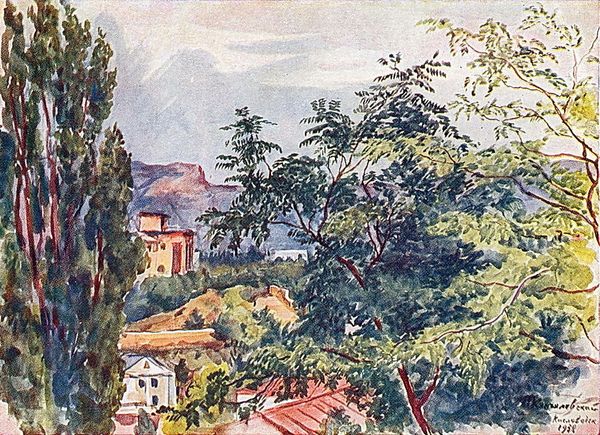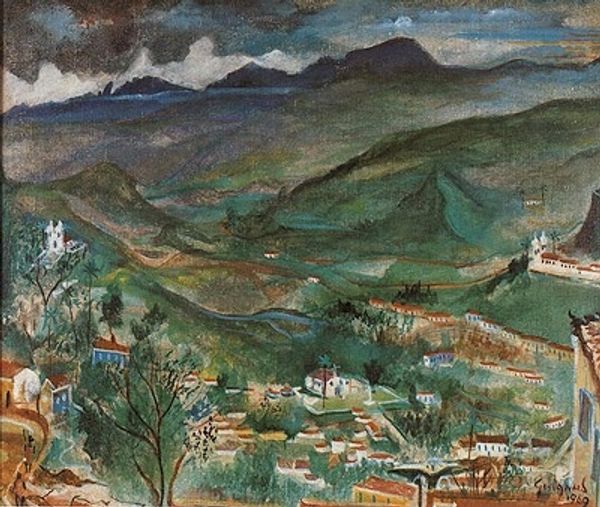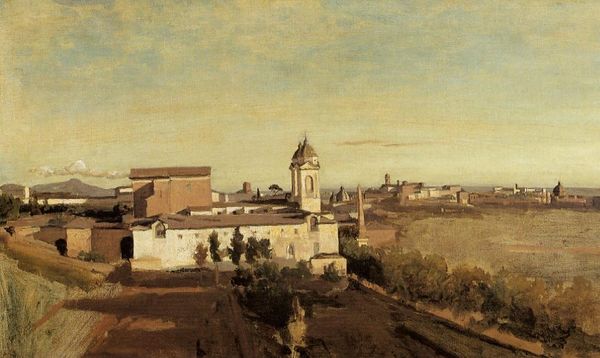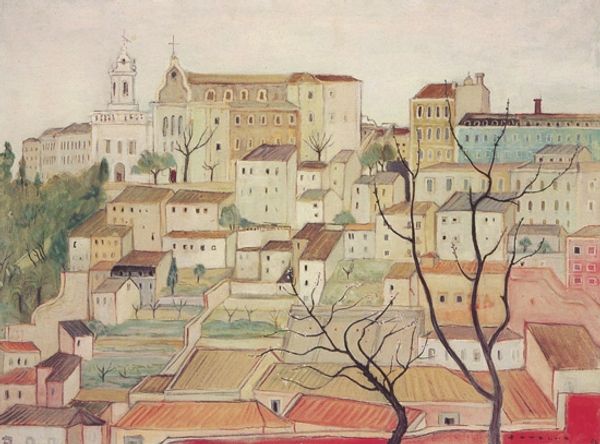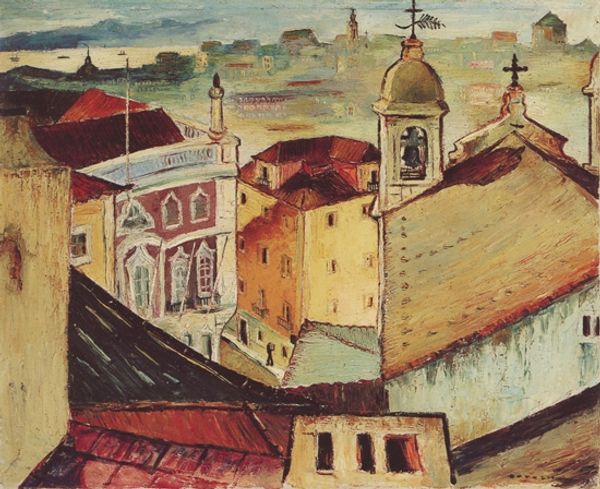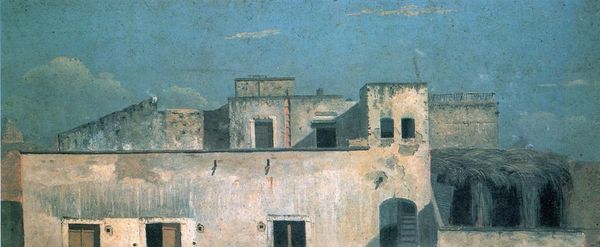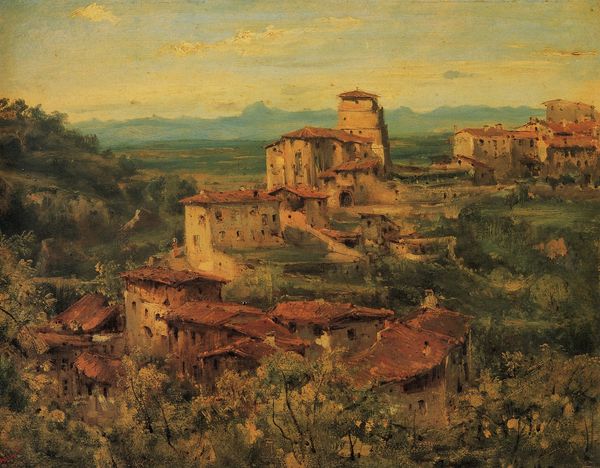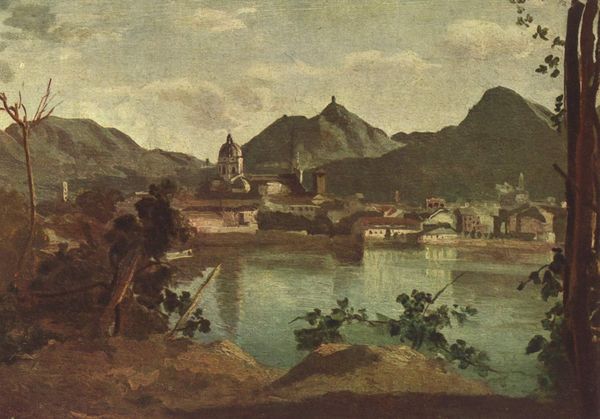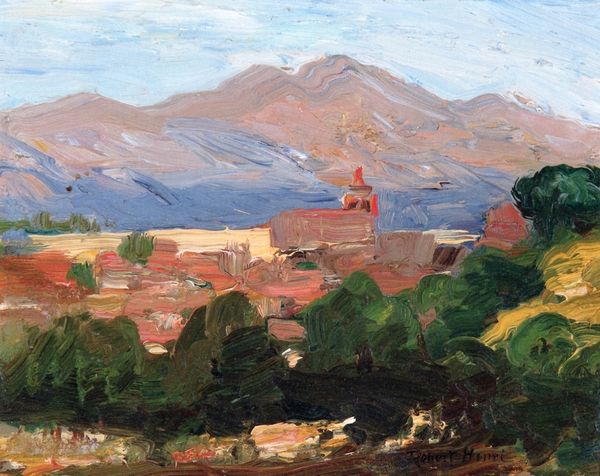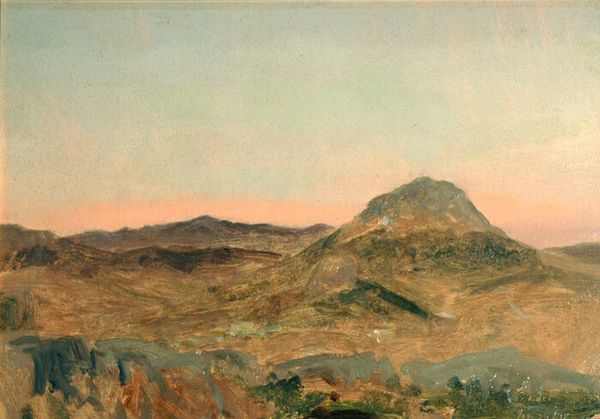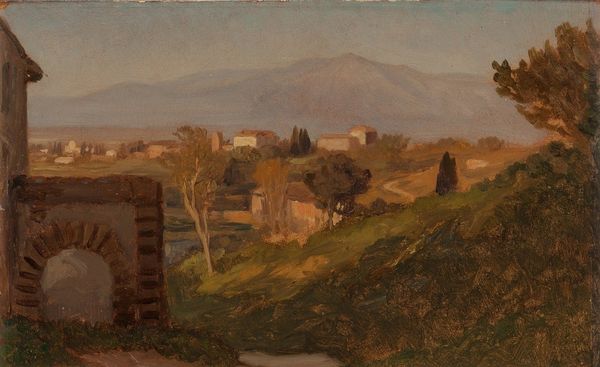
Copyright: Public domain
Editor: "Vista do Desterro," or "View of Desterro," painted in 1851 by Victor Meirelles... it feels strangely calming. The soft blues and greens create a hazy, almost dreamlike quality. What catches your eye in this piece? Curator: Oh, isn't it gorgeous? The muted tones practically hum a little lullaby, don't they? What I find particularly engaging is the almost theatrical staging of the city. Notice how our eye is led from the close-up rooftops to the unfolding cityscape and then all the way out to the misty mountains on the horizon. Meirelles isn't just showing us Desterro, now Florianópolis – he’s inviting us onto his own personal balcony. Where do you think he's standing? What does he notice from there, I wonder? Editor: That’s a lovely way to put it! It's like he’s sharing his private experience with us. I'm struck by how the buildings almost seem to blend with the landscape. Was this a common style for cityscapes at the time? Curator: Precisely. Remember that Romanticism was still very influential then, and Meirelles was known for a romantic take on academic art. Even as he meticulously documented, he’s playing with feeling and atmosphere, using that muted palette and soft focus to sort of… melt the built environment back into nature's embrace. Can you almost taste the salty breeze coming off the water? Editor: I can almost smell it, yes. The colors are just incredible! I initially saw it as almost naive, but it is more carefully orchestrated and composed, like you mention. Curator: Exactly. The artist's perspective encourages us to appreciate the beauty of his homeland. Isn’t it intriguing how a single painting can stir such contemplation? Editor: Definitely! It’s incredible how much historical and cultural context can change how we see a work of art. Curator: Indeed, my dear. Art always beckons us into dialogue with our world. It's rarely just a silent picture on a wall.
Comments
No comments
Be the first to comment and join the conversation on the ultimate creative platform.
